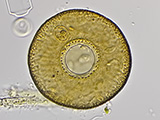

Instead, most ice-free regions consist of poorly developed and frequently unvegetated mineral soils that possess some of the lowest levels of bioavailable carbon in any terrestrial ecosystem (Burkins et al. 2005), generally the largest concentration of mosses is found at higher latitudes in the NAP, where they form expansive banks (Royles et al. Although moss-associated soil habitats exist on the continent in areas that are consistently moist (Foissner 1987, 1996 Broady 1989 Block 1994 Barman 2000 Bamforth et al. Extreme low average temperatures, limited growth periods, very little liquid water, and highly nutrient limited and saline soils severely restrict biotic diversity (Adams et al. 2008), potentially facilitating the investigation of fundamental questions about the functional roles phagotrophic protists play in soil ecosystems (Fell et al. Because of its harsh climate, continental Antarctica is home to some of the most depauperate soils on earth (Wall 2005 Convey et al. One reason may be that soils are highly diverse ecosystems and characterizing the sheer number and variety of biotic and abiotic interactions that are present is unfeasible (Bardgett and van der Putten 2014).

However, the extent and nature of the influence of phagotrophic protists on soil community dynamics and nutrient cycling is not well understood (Wardle 2006 Corno and Jurgens 2008 Saleem et al. Recent work thus shows how crucial soil protist research is to understanding general rules about soil community stability, resilience, and nutrient cycling. Fewer studies have focused on these interactions, but they are likely to be more commonplace and important for food web structure than previously thought (Geisen 2016). Phagotrophic protists also prey on other groups, including fungi, other protists, nematodes and other micro-metazoa (Bjørnlund and Rønn 2008 Rønn et al. Phagotrophic protists can increase the productivity of microbial communities by maintaining log-scale growth among prey species and encouraging the growth of less abundant species (Crotty et al. Due to their intermediary size, phagotrophic protists form an essential link between soil bacteria and metazoan predators, like nematodes, which are too large to exploit many micro-soil habitats where bacteria are capable of thriving (Wilkinson et al. Phagotrophic soil protists play critical roles in regulating soil bacterial communities and influencing plant functioning (Geisen et al. Identifying links between biodiversity and function in soils is a priority for understanding both fundamental ecological principles as well as for predicting and mitigating the effects of climate change on the biosphere (Wall 2005, 2007 Nielsen et al.
Nebela tincta protists drivers#
Additionally, future research should transition away from biodiversity survey studies to dedicated ecological studies that emphasize the function, ecophysiology, endemicity, dispersal, and impact of abiotic drivers beyond moisture and temperature. To remedy these biases, a standardized methodology using both morphological and molecular identification and increased emphasis on microflagellate and naked amoeba morphogroups is needed. However, richness estimates are likely skewed by disproportionate sampling (over half of the studies are from the peninsula), habitat type bias (predominately moss-associated soils), investigator bias (toward ciliates and the testate amoeba morphogroup), and methodological approach (toward cultivation and morphological identification). Biodiversity appears to be highly structured by region and taxonomic group, with the Antarctic Peninsula having the highest taxonomic diversity and ciliates (Ciliophora) being the most diverse taxonomic group. To facilitate and encourage future research into protist biodiversity and ecology, especially in context of the broader functioning of Antarctic terrestrial communities, I review the biodiversity, distribution, and ecology of Antarctic soil phagotrophic protists. Antarctic soil systems are also highly limited in terms of moisture, temperature, and carbon, and the resulting reduced biological complexity can facilitate fine-tuned investigation of the drivers and functioning of microbial communities. The biodiversity and ecology of soil phagotrophic protists are still largely uncharacterized, especially in the Antarctic, which possesses some of the harshest terrestrial environments known and potentially many physiologically unique and scientifically interesting species. Phagotrophic protists (formerly protozoa) are a highly diverse, polyphyletic grouping of generally unicellular, heterotrophic eukaryotes that are key regulators of the soil microbiome.


 0 kommentar(er)
0 kommentar(er)
